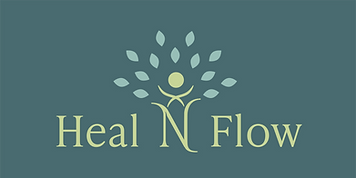Gua sha (scraping) has a long history, it has been used in Traditional Chinese Medicine for centuries because of its simple yet extraordinary healing powers.
Lately, I have been reading a book on this modality (Gua Sha: A Tradional Technique for Modern Practice by Arya Nielsen) and I have discovered that internal health problems can be helped by creating an external problem (or minor injury) that can be easily healed. The body cannot hold two pathogens at one time. If someone usually has asthma, but then catches a stomach flu, their asthma will subside until the stomach flu is over. In the same regard, if we scrape the outside surface of the body, it will be too focused on healing the most recent problem that the internal problem go away if for a moment or completly .
Gua sha is a modality that releases the "effects of cold wind in the external portion of the body". Cold portrays itself in the same way within and outside of the body. It constricts, congests, and coagulates. Pain occurs when things congest in the body. Gua sha is used to help relieve congestion and pain.
In Chinese medicine, the concept of wind/cold and external factors affecting the internal aspects of the body is similar to the concept of "germs" in Western culture. If someone isn't careful, they could get germs from the environment which can cause problems in the body and create chronic sicknesses. External factors can include; Dampness, Heat, Dryness, Cold and Wind.
Here are a few things to consider about Gua sha, for more peace of mind and confidence; which are the best conditions for healing through this method.
Sha, or petechiae, is defined as 'reddish, elevated, millet-like skin rashes' in the Chinese-English Medical Dictionary (Ou Ming 1988).
Sha consistently shows up focused at the area of pain.
The darker the Sha, the longer the stagnation of blood has been in the area.
Most of the Sha fades within 2-3 days. If it fades sooner, then the body likely has good blood circulation in that area. If it takes longer, then the body likely has less circulation in the area.
It is generally recommended that until the Sha fades, the receiver keeps the treated are covered from exposure to the sun or wind.
Take notice of your own body afterwards. "Many people report their skin feeling more sensitive, more warmth in the area, and increased range of motion. The prior pain is usually partially or completely gone".
As a result of the above sixth statement, lots of people begin to test their limits and end up hurting themselves again. "Although the pain is gone, the area is still weak and unstable, caution is highly advised before going back to full activity."
Also keep track of how you feel in the following days. "Does the pain return in two days, four days, or not at all? Is it as intense as before? Does the pain come in episodes? If so, what is the frequency? Are you able to do more before getting tired? Are you doing too much too soon? These answers are important in further treatments.
For treatments where one feels pain afterwards, "Chinese medicine recommends avoiding cold and sour food and fluids. As stated previously, cold causes contractions which can make the pain worst. The liver governs nerves and the associated taste is sour. Stimulation of the liver through sour flavors can make it so a person feels the pain more and can also make them more jumpy."
It may look scary and feel uncomfortable while its being done. However, Gua sha is as essential to eastern parts of the world in maintaining good health and longevity as brushing one's teeth. I highly advise people to give this modality a try, even if they have sensitive skin and/or fibromyalgia.
All statements with quotes in this post were transcribed from Nielsen's book unless there is parathesis stating otherwise. Very grateful for the knowledge stored in this book and the abundance of resources used to create its quality.


Comentarios